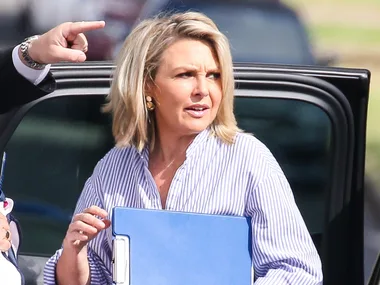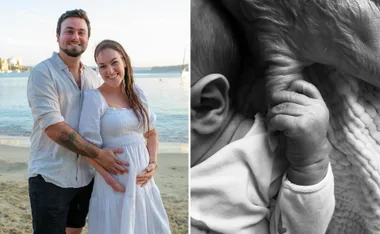This year millions of Australians will do as they have for generations; tune in to watch the 156th running of the Melbourne Cup.
It’s believed that more than 100,000 spectators will brave the predictions of rain and flood Flemington race course to be on-ground to witness the premier event of the Spring Racing Carnival which is always held on the first Tuesday in November each year.
Hundreds of millions of dollars are spent on the one race and the winner of the 3,200 metre event will take home $6.2 million dollars – as well as a trophy valued at $125,000.
But despite all the historical glory and prestige, social media posts about the day might have you believe that there is anecdotal evidence to suggest a growing trend among Australians who are turning their backs on the race. Many saying that no prize is worth the toll that the long race takes on the horses involved.
Animal rights groups hail Cup day as among the cruellest in our country’s calendar; one where we as a nation turn out in our frocks and fascinators to watch a three-minute-something race that could result in the injury or even death of its celebrated equestrian competitors.
PETA – People for the Ethical Treatment of Animals – is one animal welfare group that is leading the charge to stop races like the Melbourne Cup from taking place.
Here PETA Australia presents their case for the other side of the horse racing debate…

Melbourne Cup Day at Flemington Racecourse on November 3, 2015.
It’s hard to escape all the hype about the “race that stops the nation”, but as people become increasingly aware that horses die on racetracks, the Melbourne Cup is quickly turning into the race that divides the nation.

PHOTO: Getty.
Ever since Archer became famous for winning the first Melbourne Cup while already injured – in a race in which two other horses died – countless other horses have sustained catastrophic injuries on the racetrack after being whipped mercilessly and pushed past their limits.
Last year, we watched in horror as fan favourite Red Cadeaux broke his left foreleg on the track and was later euthanised. In 2014, the race resulted in the deaths of two horses: Admire Rakti, who succumbed to acute heart failure and dropped dead at the finish line, and Araldo, who was euthanised because of a leg injury.
And of course, horses are dying at lower-profile races all the time, with a total of 127 horses pronounced dead on Australian tracks over the course of 12 months in 2014 and 2015, according to the Coalition for the Protection of Racehorses.

Green screen is put up after Red Cadeaux is injured in race 7, the Emirates Melbourne Cup on Melbourne Cup Day at Flemington Racecourse on November 3, 2015. PHOTO: Getty


Trainer Ed Dunlop and jockey Gerald Mosse are emotional after Red Cadeaux broke down. PHOTO: Getty
These tragedies are overshadowed by the glitz and glamour, champagne, fashion, and prize money, but more and more compassionate Aussies are starting to take notice. Attendance at the Melbourne Cup Carnival has fallen for the last four years in a row. Meanwhile, anti-racing “Say Nup to the Cup” events are springing up all over the country.
A report found that the wastage rate for horses in training or racing was around 40 per cent – and many of those who don’t make the cut are sent to slaughter.
Horses who do make the grade begin a gruelling training and racing schedule. Because their skeletal systems are still growing, many sustain muscle and joint injuries, fractures, internal bleeding, musculoskeletal trauma, and ruptured ligaments. It’s also common for them to suffer from an exercise-induced pulmonary haemorrhage – which can cause blood to pour from their nostrils – after a race.

PHOTO ABOVE: Not a Melbourne Cup horse but reportedly a horse nose with blood after racing. Allegedly a case of Exercise Induced Pulmonary Hemorrhage (EIPH) also known as ‘bleeding’ or a ‘bleeding attack’ has been known to occur in horses that engage in short periods of strenuous exercise. PHOTO: Getty
Just like humans, horses can feel a fly land on their skin – so can you imagine the pain that they endure when they’re struck repeatedly with a whip? Whipping can cause localised trauma and tissue damage, and ironically, flogging a live horse is only marginally less futile than flogging a dead one. A 2011 study of Australian horse racing found that it improved the race times of just 2 per cent of horses.
Researchers at the University of Melbourne discovered that half of the horses they studied had blood in the windpipe and close to 90 per cent had blood deeper in the lungs. In addition to trauma to the respiratory system, most horses suffer from stomach ulcers. Studies in both Sydney and the US have found that over 85 per cent of horses had lesions in the stomach lining.
Sick and injured horses may also be given steroids, which can mask pain or make a horse run faster. Most broken-down horses don’t make headlines – they’re just quietly shipped interstate to be slaughtered for human consumption or pet food.
There’s nothing “sporting” about a pastime in which animals routinely suffer and die. It’s time for the nation to stop “the race that stops the nation”.
Please, don’t support the Melbourne Cup or any other horse racing event.
This article was written and published with the full permission of PETA Australia. If you would like to find out more you can visit PETA at their website http://www.peta.org.au/











